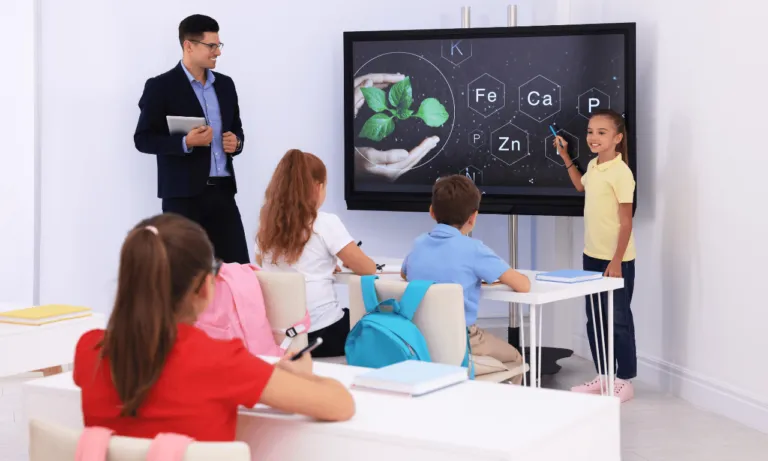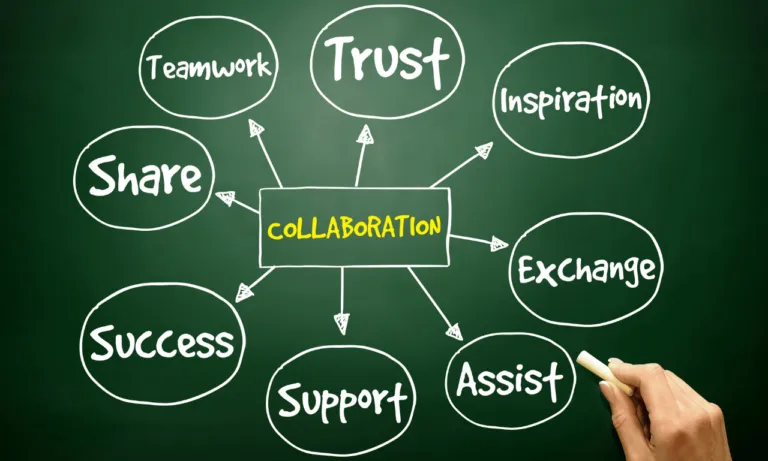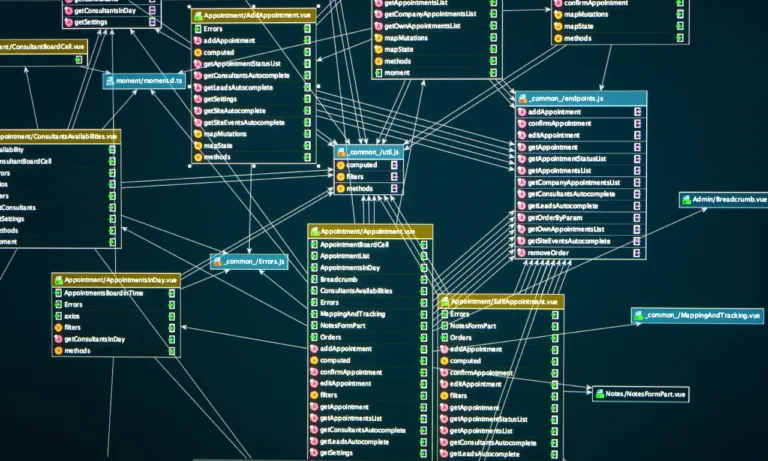Phone:
(+65)8319-0742
The landscape of educational evaluation strategies is continuously evolving, and at the forefront is Dynamic Assessment in Education. This modern method is turning heads for its ability to shift the focus from static performance outcomes to the unfolding potential within every student. Unlike the one-size-fits-all approach of traditional evaluation, personalized assessment methods championed by dynamic assessment strategies are tailored to meet individual learners where they are in their developmental journey.
What sets dynamic assessment apart is its commitment to ongoing assessment practices, which nurture the growth of students by dynamically adapting to their needs. Itâs an approach that not only measures academic success but also fosters a supportive learning environment. This continuous loop of interaction and feedback between the educator and the learner lays a foundation for an education system that values progress over performance, and potential over proficiency.
Key Takeaways
- Dynamic Assessment in Education focuses on maximizing individual learning potential.
- Personalized assessment methods cater to the unique needs of each learner.
- Ongoing assessment practices facilitate continual student growth and development.
- Educational evaluation strategies are evolving to include more adaptive measures.
- The approach emphasizes collaboration and responsiveness in assessment processes.
Understanding the Fundamentals of Dynamic Assessment
At the heart of dynamic assessment lies the influential work of L.S. Vygotsky, a name synonymous with transformative contributions to pedagogical theories. Recognizing the limitations in conventional evaluation methods, Vygotsky introduced formative assessment tools designed to actively involve learners and educators in a collaborative process of cognitive and skill development.
Dynamic assessment, as a concept, stretches beyond the mere measurement of acquired knowledge; it aims to understand and nurture a learner’s potential, firmly rooted in the culture of mediation in learning. Let’s delve deeper into the cornerstones of this approach, exploring its theoretical origins and the seminal role of mediation.
Origins and Theoretical Background
The pioneering thoughts of Vygotsky paved the way for what we now identify as formative assessment tools, integral to dynamic assessment. His approach highlights the importance of social interaction in learning, arguing that the developmental process cannot be separated from its social contextâa principle that remains at the core of dynamic assessment methodologies.
The Role of Mediation and the Zone of Proximal Development
Mediation in learning focuses on the dynamic interaction between the learner, the task at hand, and the mediatorâoften the educator. It is within this intersection that the Zone of Proximal Development (ZPD) reveals its significance. The ZPD defines the range between what the learner can achieve independently and what they can accomplish with guidance. Vygotsky’s Zone of Proximal Development enables educators to identify a learner’s potential, thus custom-tailoring interventions to bridge the gap between current competencies and potential capabilities.
This tailored guidance, or mediation, serves to scaffold the learner through their ZPD, establishing a partnership in the learning process that traditional assessments rarely afford. The dynamic interplay of assessment through guidance not only nurtures emergent skills but also fosters independence and self-regulation within learnersâa goal every educational practitioner strives to achieve.
| Assessment Type | Purpose | Focus | Method | Outcome |
|---|---|---|---|---|
| Traditional | Measure knowledge | What is known | Static evaluation | Quantitative results |
| Dynamic | Nurture potential | What can be known | Mediation in learning | Qualitative insights |
Dynamic assessment continues to gain recognition as a pragmatic approach towards comprehensive education, embedding the principles espoused by Vygotsky. Educators, through the use of formative assessment tools and recognition of the Zone of Proximal Development, are better equipped to mediate learning experiences that ultimately benefit the ongoing cognitive and skill development of their students.
Exploring the Benefits of Dynamic Assessment

Dynamic assessment is a cornerstone of modern educational evaluation strategies, offering an array of benefits that enhance the learning experience. By guiding students to recognize their learning capabilities as malleable, this approach instills a strong growth mindset. This is achieved through student progress tracking and interactive assessment techniques, which actively engage learners in their educational journey.
Moreover, dynamic assessment is conducive to personalized teaching methods. It allows educators to deliver tailored feedback to students, thereby addressing their individual needs and fostering an environment of support and mutual understanding. The result is a marked improvement in teaching effectiveness and learner outcomes, made possible by the adaptive nature of this assessment method.
- Identifies learning potential, driving educational efforts beyond current abilities.
- Promotes collaboration, building a partnership between teacher and student.
- Empowers students with actionable feedback, enhancing their sense of autonomy.
| Dynamic Assessment Benefit | Description | Impact on Learning |
|---|---|---|
| Student-Centered Feedback | Custom feedback based on individual performance and progress. | Enhances understanding and retention of new concepts. |
| Progress Tracking | Continuous monitoring and documentation of student development. | Enables informed instructional adjustments and targeted support. |
| Interactive Techniques | Engagement through hands-on and collaborative problem-solving tasks. | Develops critical thinking and practical application skills. |
Comparing Dynamic and Traditional Assessment Methods

The landscape of assessment in teaching and learning is changing, moving from traditional assessment practices that offer a static view towards more adaptive learning models that emphasize responsiveness in education. This shift represents a fundamental change in approach, where the educator’s role becomes more of a facilitator, adapting to the diverse needs and potential of learners.
Contrasting Features and Applications
At the heart of this transformation is the contrast in features and applications between dynamic and traditional methods. Traditional assessments, characterized by their standardized formats, are primarily designed to quantitatively measure learners’ knowledge and skills at certain points in time. Dynamic assessment, on the other hand, focuses not only on what students know but also on how they learn, accommodating their individual learning paths and potential for growth.
Advantages and Limitations of Both Approaches
Each assessment approach has its distinct advantages and limitations. Traditional methods provide a clear, measurable benchmark for academic performance but may not account for the nuances of individual learner’s cognitive development. Conversely, dynamic assessments foster a more personalized learning experience but require a greater investment in time and resources for effective implementation. As such, educators must balance the scalability and objectivity of traditional assessments with the individualized, developmental insights afforded by dynamic assessment practices.
Implementing Dynamic Assessment in the Classroom

The introduction of dynamic assessment in classroom settings signifies a progressive shift toward more personalized assessment methods that value and harness individual student growth. Unlike traditional evaluation systems, this innovative approach to student assessment prioritizes formative feedback, calling on educators to fine-tune their teaching to meet the individual needs of their students through interactive assessment techniques. To illustrate the transition towards such ongoing assessment practices, consider the following steps:
- Establish a baseline for student knowledge and skill levels to identify areas for growth and potential.
- Implement real-time feedback mechanisms that allow educators to assess and respond to student needs swiftly.
- Use scaffolding strategies to provide targeted support that encourages students to stretch beyond their current capabilities.
- Continually adapt learning objectives and instructional methods based on student responses and progress.
- Create opportunities for peer collaboration, fostering an interactive environment where students learn from and with each other.
- Integrate reflective activities that empower students to take an active role in their learning process.
This commitment to dynamic assessment fosters an academic atmosphere ripe for not just learning, but also for nurturing critical thinking, problem-solving, and the capacity to engage in self-assessment. It is instrumental in crafting a learning environment where each student is seen, heard, and guided through their academic journey in a way that is distinct to them. The following table showcases a comparison between dynamic and traditional assessment techniques:
| Criteria | Dynamic Assessment Technique | Traditional Assessment Technique |
|---|---|---|
| Time of Assessment | Throughout the learning process | End of a learning period/unit |
| Role of Educator | Facilitator and guide | Evaluator |
| Student Involvement | High – students participate in their assessment | Variable – typically low engagement in assessment process |
| Feedback | Immediate and formative | Delayed and summative |
| Outcome | Emphasizes learning potential and growth | Focuses on measurement of current knowledge |
| Adjustments to Instruction | Frequent and based on ongoing insights | Infrequent, generally standardized without personalization |
The embrace of personalized assessment methods through dynamic assessment liberates the educational process from the one-size-fits-all paradigm and endorses a culture of authentic understanding. The application of interactive assessment techniques and commitment to ongoing assessment practices are essential to cultivating proficient learners prepared for the complexities of the modern world.
Dynamic Assessment in Education: Diverse Learners and Contexts
The application of dynamic assessment in education ensures that the inherent differences and abilities of each learner are recognized and valued. As an embodiment of personalized assessment methods, it particularly shines in environments such as special education and bilingual classrooms. The cornerstone of its effectiveness lies in its adaptability, enabling educators to refine their teaching strategies to meet the varying needs of individual students, ensuring that all have equitable chances to thrive academically.
Adapting Dynamic Assessment for Special Education
Within the realm of special education, dynamic assessment is transformative. It diverges from a one-size-fits-all approach, instead offering a tailored experience that takes into consideration the unique capabilities and hurdles faced by learners with disabilities. By focusing on growth and embracing necessary accommodations, dynamic assessment goes beyond standard evaluations to chart a course for students that is both insightful and supportive of their continual development. This approach aligns with the ultimate goal of special education: to deliver effective, individualized learning experiences that enable all students to reach their fullest potential.
Relevance to Language Learning and Bilingual Education
When it comes to language learning and bilingual education, dynamic assessment turns into an indispensable tool. Through its lens, educators can gauge and foster linguistic skills within the learner’s Zone of Proximal Development. This real-time, responsive evaluation provides critical insights into the learner’s evolving language proficiency. Educators are thus better equipped to support students with diverse linguistic backgrounds, navigating them through the intricacies of acquiring and mastering multiple languages seamlessly. This individualistic and nurturing approach caters to the diverse fabric of learning communities and is emblematic of the inclusive spirit of contemporary education.
FAQ
What is Dynamic Assessment in Education?
Dynamic Assessment in Education refers to an evolving approach that focuses on assessing and understanding a student’s learning potential, rather than just their performance outcomes. This method adapts to the learner’s growth and needs, providing personalized feedback and interventions aimed at maximizing their learning capacities.
How does Dynamic Assessment differ from traditional assessments?
Unlike traditional assessments, which tend to be static and measure what a student already knows, Dynamic Assessment is adaptive and interactive, emphasizing cognitive development and engagement. It involves ongoing assessment practices to gain a deeper understanding of a learner’s abilities and potential.
Who pioneered the concept of Dynamic Assessment and what theoretical background does it have?
The concept of Dynamic Assessment is deeply rooted in the work of Russian psychologist L.S. Vygotsky. Its theoretical background stems from Vygotsky’s theory of the Zone of Proximal Development (ZPD), which focuses on the range of tasks that a learner can perform with assistance but not yet independently, highlighting the potential for cognitive development.
What roles do mediation and the ZPD play in Dynamic Assessment?
Mediation and the Zone of Proximal Development (ZPD) are central to Dynamic Assessment. Mediation involves an assessor providing support to help learners extend their skills beyond current capabilities, while the ZPD represents the range of abilities that are in the process of development. Together, they foster a space for facilitated learning and potential growth.
Can you outline some benefits of employing Dynamic Assessment in education?
Dynamic Assessment offers several advantages, such as identifying students’ learning potential, promoting a growth mindset, and fostering collaboration between educators and learners. It supports personalized teaching strategies, actively involves students in the learning process, and provides specific, actionable feedback.
How are the applications of Dynamic Assessment unique in special education and language learning?
In special education, Dynamic Assessment tailors the evaluation process to meet the unique needs of learners with disabilities, emphasizing growth potential and necessary accommodations. In language learning and bilingual education, it assesses and supports language competencies within the learner’s ZPD, offering valuable insight into their evolving language skills.
What are some key interactive assessment techniques used in Dynamic Assessment?
Key interactive assessment techniques in Dynamic Assessment include real-time feedback, scaffolding, and mediated learning experiences. These techniques are designed to assist students in overcoming challenges and advancing their learning journey progressively.
How do ongoing assessment practices benefit student progress tracking?
Ongoing assessment practices enable continuous monitoring of a student’s learning trajectory, enabling educators to personalize instruction and interventions. This real-time student progress tracking is essential for making informed decisions that support each learner’s individual path to success.

Guiding Success: Gradual Release of Responsibility
The Gradual Release of Responsibility model is a transformative approach to education that places the…

Enhance Education with Interactive Learning Guides
Education is undergoing a digital revolution, and Interactive Learning Guides are at the forefront, shaping…

Embracing Adaptive Teaching Methods in Education
The educational landscape is undergoing a transformative shift with the introduction of Adaptive Teaching…

Empowering Learning with Collaborative Educational Framework
The landscape of education is undergoing a revolutionary change with the introduction of the Collaborative…

Work at Height Standard: Safety Guidelines Explained
Working at height means doing a job where you could fall and get hurt. In general industry, the Occupational…
No posts found

















